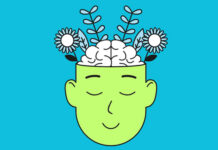Addiction is often portrayed in extremes as an image of a person in despair, isolated from society, or on the brink of collapse. While those depictions highlight the devastating effects of addiction, they often miss the more subtle and insidious ways addiction develops and reshapes an individual’s physical, mental, and social health. Addiction is not merely a bad habit or a moral failing; it is a chronic condition that affects brain chemistry, decision-making, and overall well-being.
Understanding Addiction: More Than Just Substances
When most people hear the word “addiction,” they think of drugs or alcohol. However, addiction can manifest in many forms. Behavioral addictions such as gambling, gaming, shopping, or even compulsive internet use can be just as damaging as substance-related addictions. In all cases, the defining feature is the compulsive need to engage in a behavior or consume a substance despite harmful consequences.
Addiction hijacks the brain’s reward system. Normally, activities such as eating, exercising, or socializing trigger the release of dopamine, a neurotransmitter that reinforces pleasurable experiences. Addictive substances and behaviors cause an unnatural surge of dopamine, creating an intense feeling of euphoria. Over time, the brain adapts by producing less dopamine or reducing dopamine receptors, leaving individuals dependent on the addictive behavior to feel normal. This neurological shift is why addiction is recognized as a disease by major medical organizations, including the World Health Organization and the American Medical Association.
Physical Health Consequences of Addiction
The physical effects of addiction vary depending on the substance or behavior, but nearly all forms take a toll on the body.
- Cardiovascular Problems:
Stimulants such as cocaine and methamphetamine can cause irregular heartbeats, high blood pressure, and increased risk of stroke. Alcohol abuse contributes to cardiomyopathy, arrhythmias, and heart failure. Even nicotine addiction, often underestimated, is a leading cause of heart disease globally. - Liver and Kidney Damage:
Chronic alcohol use is notorious for causing liver cirrhosis and hepatitis. Drugs like heroin can cause kidney infections and failure, particularly when injected with unsterile equipment. - Respiratory Issues:
Smoking, whether tobacco or other substances, leads to lung cancer, chronic obstructive pulmonary disease (COPD), and reduced lung function. Inhaling certain drugs can cause collapsed lungs or severe infections. - Immune System Suppression:
Addiction can weaken the immune system, making the body more vulnerable to infections. Intravenous drug users face additional risks such as HIV, hepatitis B and C, and bacterial infections due to needle sharing. - Neurological Impact:
Substance use can lead to seizures, cognitive impairment, memory loss, and long-term brain damage. Alcohol, for example, is linked to Wernicke–Korsakoff syndrome, a debilitating neurological disorder caused by vitamin B1 deficiency.
Mental and Emotional Health Consequences
The relationship between addiction and mental health is bidirectional. Mental health disorders such as anxiety, depression, and post-traumatic stress disorder (PTSD) can increase vulnerability to addiction, while addiction can exacerbate or even trigger these conditions.
- Mood Disorders:
Substances that initially provide temporary relief from stress or sadness can lead to worsening depression or anxiety when their effects wear off. The emotional highs and lows associated with addiction can destabilize an individual’s mental state. - Cognitive Decline:
Chronic addiction impairs decision-making, attention span, and impulse control. This cognitive impairment makes recovery more challenging and perpetuates the addictive cycle. - Social Isolation and Shame:
Addiction often leads to strained relationships, social withdrawal, and feelings of guilt or shame. These emotions can fuel the addiction further, creating a vicious cycle that isolates individuals from their support networks.
Social and Economic Impact
Addiction affects more than just the individual—it reverberates through families, communities, and entire societies.
- Family strain: Loved ones often experience emotional trauma, financial stress, and sometimes even physical danger due to a family member’s addiction.
- Workplace consequences: Addiction can lead to absenteeism, decreased productivity, accidents, and job loss.
- Economic burden: The societal costs of addiction—through healthcare, lost productivity, and criminal justice expenses—amount to billions of dollars annually in many countries.
Pathways to Recovery and Health
Recovery from addiction is not a linear journey, and it involves more than simply quitting a substance or behavior. It requires addressing the underlying physical, psychological, and social factors that contribute to addiction.
- Medical Intervention:
For substance use disorders, medical treatment may involve detoxification, medication-assisted therapy (e.g., methadone for opioid addiction, naltrexone for alcohol dependence), and regular health monitoring. Treating physical damage early can prevent long-term complications. - Psychological Support:
Cognitive-behavioral therapy (CBT), motivational interviewing, and group therapy can help individuals understand their triggers, change thought patterns, and build coping mechanisms. Mental health support is crucial in preventing relapse. - Social Support Networks:
Support groups such as Alcoholics Anonymous (AA) or Narcotics Anonymous (NA), as well as community-based programs, offer peer support and accountability. Rebuilding healthy social connections helps individuals reintegrate into society. - Lifestyle Changes:
Exercise, balanced nutrition, sufficient sleep, and stress management techniques (like meditation or yoga) can aid the brain and body in healing. A healthy lifestyle supports long-term recovery by stabilizing mood and improving overall well-being.
Prevention: Building Resilience Before Addiction Takes Root
Prevention efforts are most effective when they begin early. Educating young people about the risks of addiction, fostering strong family and community ties, and promoting emotional resilience can reduce the likelihood of substance use and behavioral addictions.
Policy measures also play a role. Regulating advertising, increasing access to mental health services, and creating supportive environments for recovery rather than punitive ones are crucial in addressing addiction at the societal level.
Conclusion: Health Beyond the Habit
Addiction is a complex and multifaceted issue that extends far beyond the stereotype of a person with a substance use disorder. It is a chronic condition that affects the brain, body, and social fabric of individuals and communities. However, with the right combination of medical care, psychological support, and societal understanding, recovery is possible. By viewing addiction through a health-focused lens rather than a moral one, we can break the chains of stigma and provide the compassionate care that individuals need to reclaim their lives.















